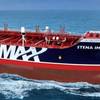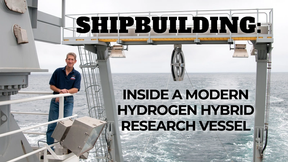AkzoNobel Acheives ISO 19030 Compliance
AkzoNobel’s Marine Coatings business has outlined for the first time its full compliance with ISO 19030, the new standard for measuring hull and propeller performance. The requirements for ISO 19030 have been incorporated into AkzoNobel’s recommendations for hull performance monitoring, which means hull coating performance predictions from AkzoNobel’s big data consultancy tool, Intertrac Vision, can be verified and validated against actual performance using a monitoring process that is ISO 19030 compliant.
The ISO 19030 standard consolidates the latest academic and industry knowledge and understanding into an agreed and standardised method to measure the performance of a vessel through the water. This enables the transparent comparison of datasets and will work towards the elimination of disputes in relation to vessel performance. In conjunction with other industry stakeholders spanning the shipping supply chain, AkzoNobel has played an influential role in the development of all parts of the new ISO 19030 standard.
Michael Hindmarsh, Project Lead for Intertac Vision at AkzoNobel’s Marine Coating’s business, said: “Intertrac Vision is a system that is easily adaptable, scalable and has the capabilities to react to market changes, and it can incorporate more functionality as required to suit the needs of our business and customers. The adoption of ISO 19030 into Intertrac Vision to measure hull performance is an important example of this, and demonstrates AkzoNobel’s ongoing commitment to delivering transparency and choice in hull coating selection and performance.”
Intertrac Vision is a pioneering free digital consultancy service for ship owners and operators that provides accurate and transparent predictions on the fuel and CO2 savings potential of fouling control coatings, prior to application. Hull coating performance predictions produced by Intertrac Vision can be analysed during vessel operation to confirm compliance with the requirements for all parts of ISO 19030. This includes ISO 19030 Part 2, which is used by an estimated 10% of the commercial fleet and is based on taking data from sophisticated on-board sensors at high frequency intervals, as well as ISO 19030 Part 3, an area of the standard proposed by AkzoNobel which is founded on a tiered system of potential methods for monitoring, including noon report data collection. AkzoNobel will also continue to support ship owners and operators who wish to verify the performance of their coatings using other methods.
Barry Kidd, ISO 19030 working group member for AkzoNobel’s Marine Coatings Business, said: “In line with our belief in providing choice to customers, and in consideration of the tough economic climate, we believe that the new ISO 19030 standard should be made relevant to the widest possible number of ship owners and operators within the industry. Compliance with ISO 19030 Part 2 and Part 3 enables us to achieve this, by enabling the vast majority of the industry to ensure, and demonstrate compliance with the new standard.”
ISO 19030 will be finalised this year marking a solid, initial ‘line in the sand’ in relation to monitoring hull and propeller performance. AkzoNobel will continue to educate the shipping industry on the principles and value of the standard, while seeking further clarity on its take-up within the market, and the appetite for integration into ship owners’ individual in-house analysis systems, as well as the analysis software of performance monitoring companies.













